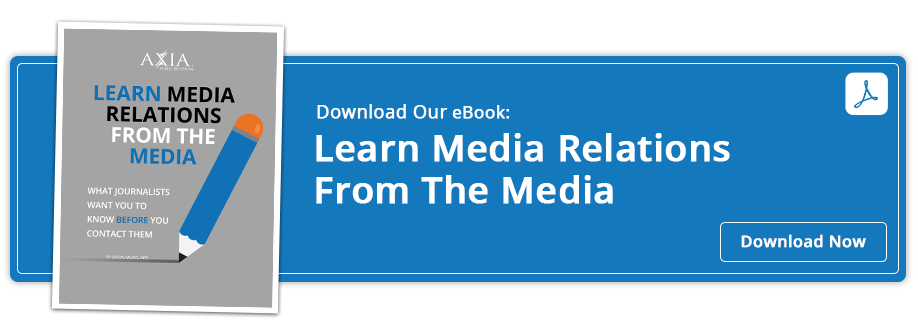 Be sure your spokesperson is ready for the tough questions
Be sure your spokesperson is ready for the tough questions
If you lack spokesperson training, an interview with the media can be daunting. It’s not easy to maintain your composure when you’re standing in front of a bank of microphones with camera lenses pointed directly at your nostrils.
A critical public relations skill is optimally negotiating media interviews. Most PR firms offer a form of spokesperson training or coaching to clue in company spokespeople about the finer elements, one of which is how to properly set the tone for media interaction – whether amid crises or simply run-of-the-mill product launches.
In each instance, the spokesperson has the opportunity to manage the momentum and tone of the dialogue. If you aren’t prepared or are without set goals in mind, media interviews can easily go awry. Therefore, keep these best practices in mind when standing up to the microphone.
- Decide if you will be informational or confrontational.
The very first thing to decide is the type of relationship you wish to have with the press. If you are the chosen mouthpiece for a company, you alone can determine if interviews will be informational or confrontational. The goal of a spokesperson is to deliver factual information and provide necessary context to the public. It’s not to deflect questions with “no comment” or argue over what questions are or aren’t appropriate. The sole task at hand is to provide maximum information to satisfy your audience. Short of that, you risk relationships, credibility, control and coverage.
- Speak with integrity and build credibility.
Many of us have seen uncomfortable news interviews where the subject or spokesperson repeatedly stumbled over words or worse, stared into the camera like a deer caught in headlights. These are both telltale signs of someone who is lying or providing mistruth. The media is trained to read nonverbal communication as well as sort through spoken language. By sharing information with integrity, to the best of your ability, you build credibility and set the proper collaborative tone for any interview. When journalists spot any information they feel is untrue, rest assured, they will call you on it.
- Answer before providing context.
When a reporter asks a question, your first responsibility is to answer it. Too often, interview subjects editorialize in lieu of answering, and the media has long associated this technique with dishing mistruth or “spinning.” In interviews, answer the question first, then provide context to support, clarify or enhance your initial response. See the example below and the subtle difference.
“Mr. Rogers, is it true that your company increased the cost of its life-saving drug by 600 percent?”
Answer: Yes, we increased the retail price and the reasons we did so are as follows …
vs.
“Mr. Rogers, is it true that your company increased the cost of its life-saving drug by 600 percent?”
Answer: In the field of pharmaceuticals, costs associated with drugs – life saving or otherwise – are always in flux.
You should never regard the news media as paparazzi. Its purpose has historically been to ask the tough questions, since reporting the news is both a privilege and a serious responsibility. Give answers first and context after.
To grow your knowledge base about how to prepare for media interviews, consider hiring a PR partner to guide you along your journey. In the interim, Axia Public Relations has placed years of experience and expertise into its e-book Learn Media Relations from the Media. This guide provides details of best practices and will help you successfully plan for future media interaction.

 Wendy Bulawa Agudelo has nearly 20 years of experience in technology, business, consumer and nonprofit public relations. She serves on the Massachusetts Down Syndrome Congress PR Task Force and is a culinary enthusiast and champion for the special needs community. Wendy has worked for Axia Public Relations since September 2014. Learn more about Wendy Bulawa Agudelo. Connect with Axia on Twitter @axiapr or tell us what you think in the comments below.
Wendy Bulawa Agudelo has nearly 20 years of experience in technology, business, consumer and nonprofit public relations. She serves on the Massachusetts Down Syndrome Congress PR Task Force and is a culinary enthusiast and champion for the special needs community. Wendy has worked for Axia Public Relations since September 2014. Learn more about Wendy Bulawa Agudelo. Connect with Axia on Twitter @axiapr or tell us what you think in the comments below.
Featured image credit: 123rf.com
Topics: media relations, public relations, spokesperson training

Comment on This Article